Foundation Catalog
Photography by Gene Peach
These artifacts were selected by Patricia La Farge in 2009 to show examples of the types of materials she plans to set aside and preserve for her Foundation Collection.
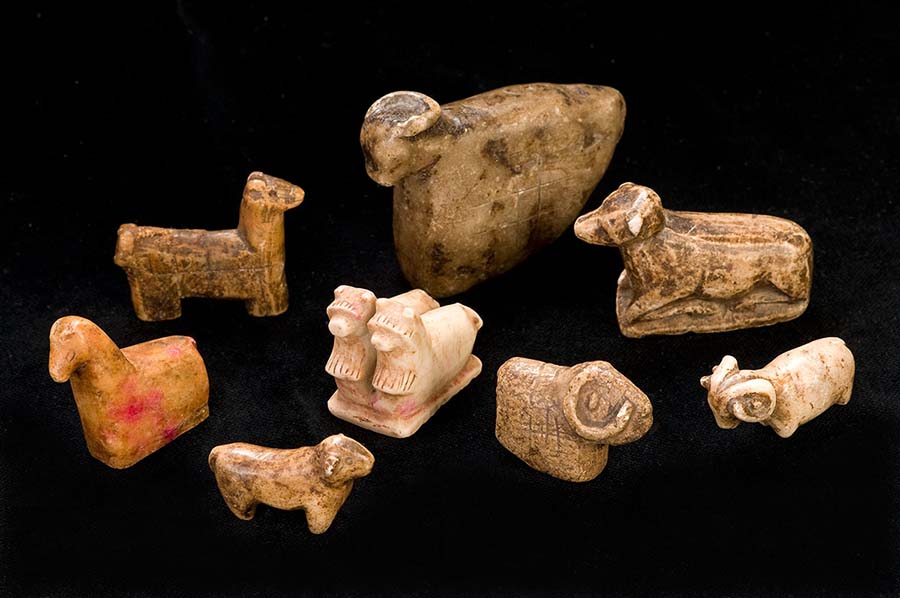
Illas/Amulets. Artists unknown, early 20th century. Huamanga stone. Peru. Traditionally these amulets were buried to protect against misfortune. The red stain on the figure to the left indicates its use during Carnaval.
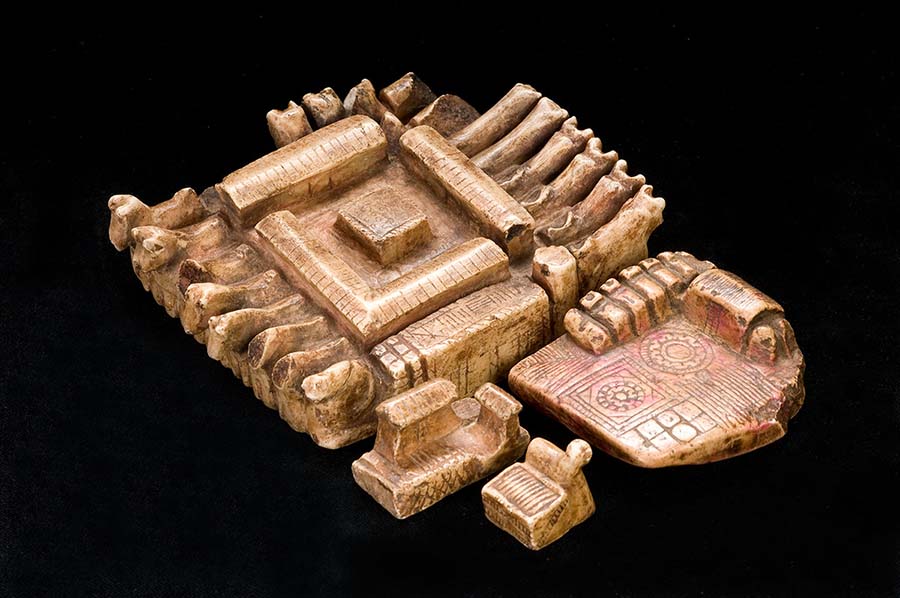
Illa/Amulet. Artist unknown, early 20th century. Huamanga stone. Peru. Traditionally these amulets were buried to protect against misfortune.

Yalalag Cross and Chain. Felix Bautista, 2005-2006. Sterling silver. Oaxaca, Mexico. The basic design of the Yalalag cross predates the conquest of Mexico. Post conquest, the artisans incorporated Christian themes, as shown here with the angel motif.

Yalalag Crosses. Felix Bautista, 1990s. Sterling silver. Oaxaca, Mexico.

Moses Saved from the Waters. Vidal Gutierrez, 1990s. Ceramic. Lurin, Peru.

Chordeleg Pot. Artist unknown, early 20th century. Ceramic. Chordeleg, Azuay Province, Ecuador.
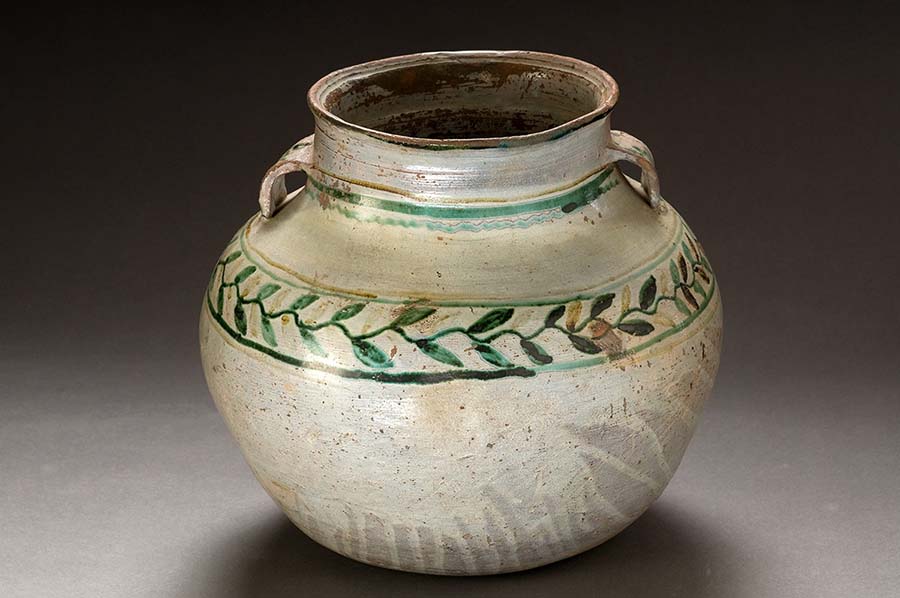
Utilitarian Pot. Artist unknown, early 20th century. Ceramic. La Victoria, Cotopaxi Province, Ecuador.
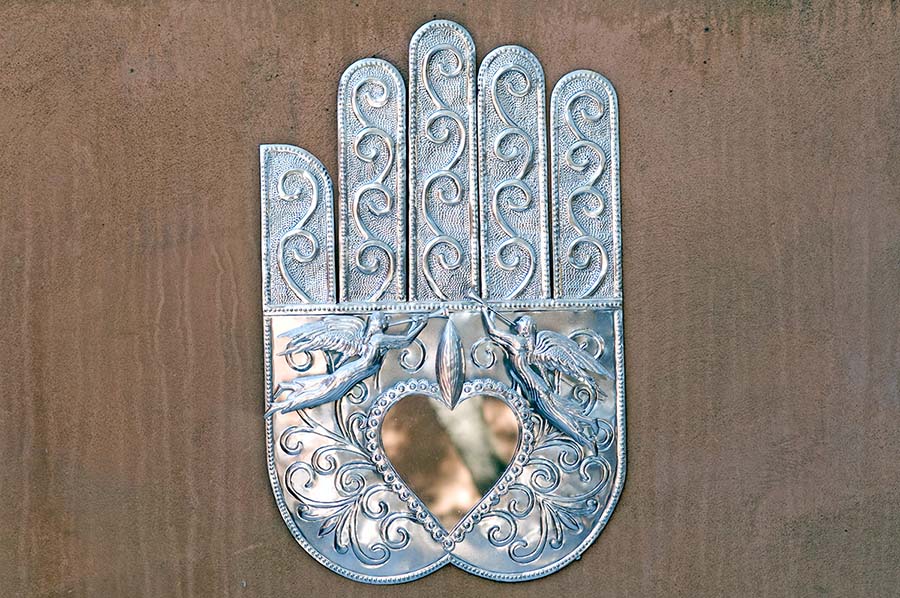
Hand of Fatima with Angels. Arturo Sosa Perez, 2007. Tin and glass. Oaxaca, Mexico.
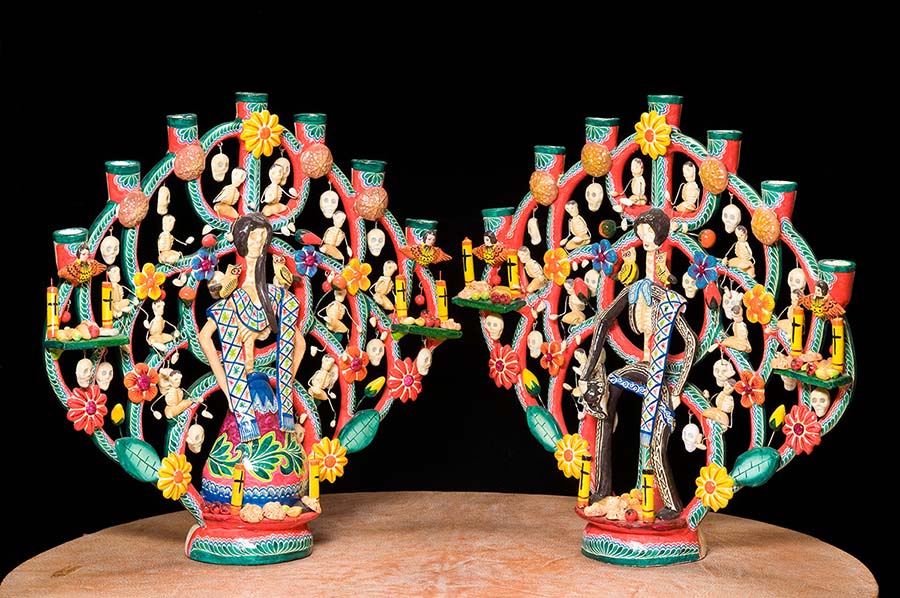
Arbol de la Vida Candelabros. Isabel Castillo Orta, 1980s. Ceramic. Izucar de Matamoros, Puebla, Mexico.
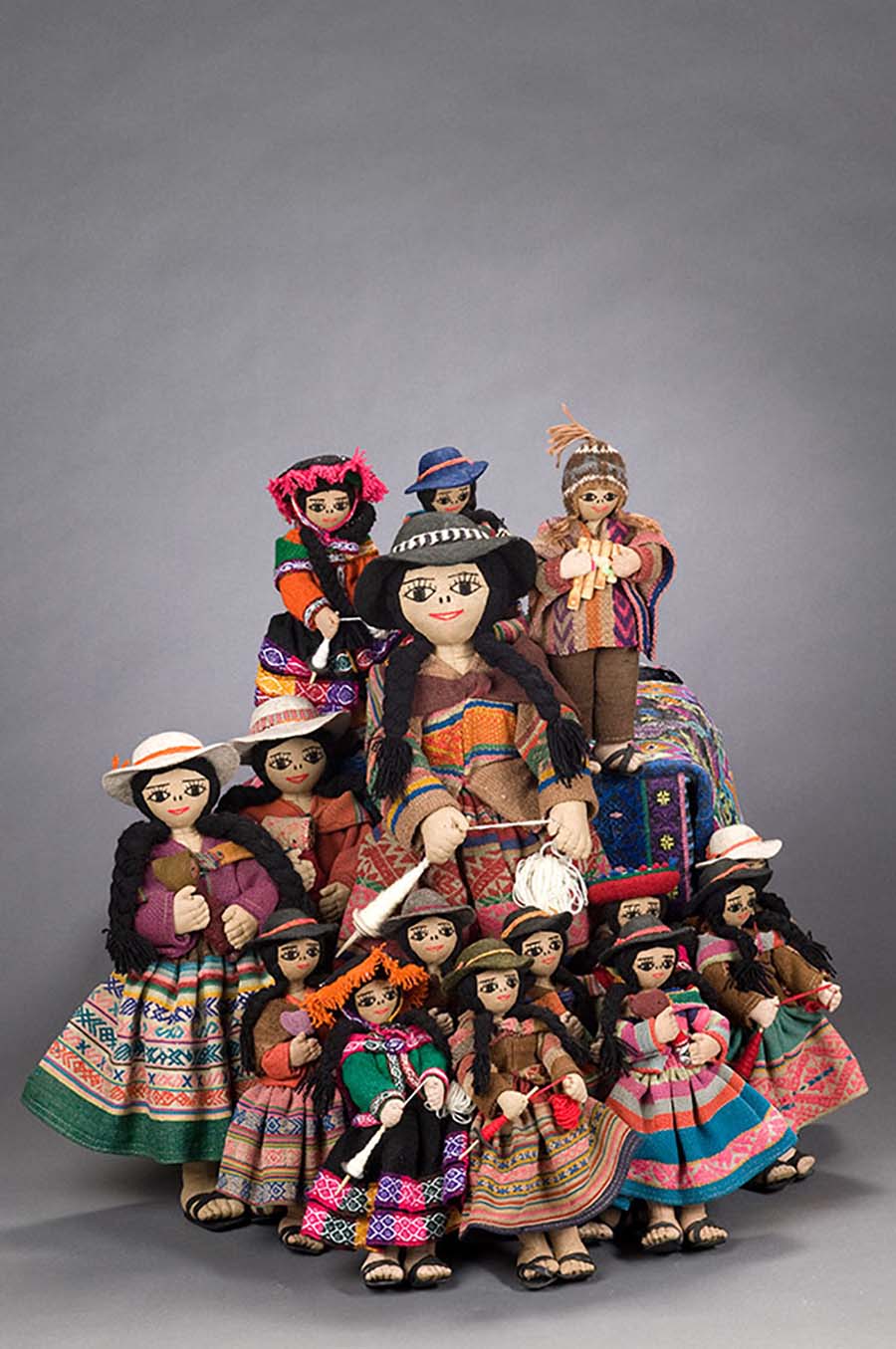
Muñecas/Dolls. Artisan employed by Enrique and Lourdes Osoro, 2007-2009. Wool. Maqui Maqui, Pataz Province, Peru.

Chullos/Knitted Caps. Artisans unknown, mid-to-late 20th century. Wool. Cusco, Peru. Traditionally men knitted local themes and items of interest into their chullos. These caps were also hung from belts and used as dance ornaments.
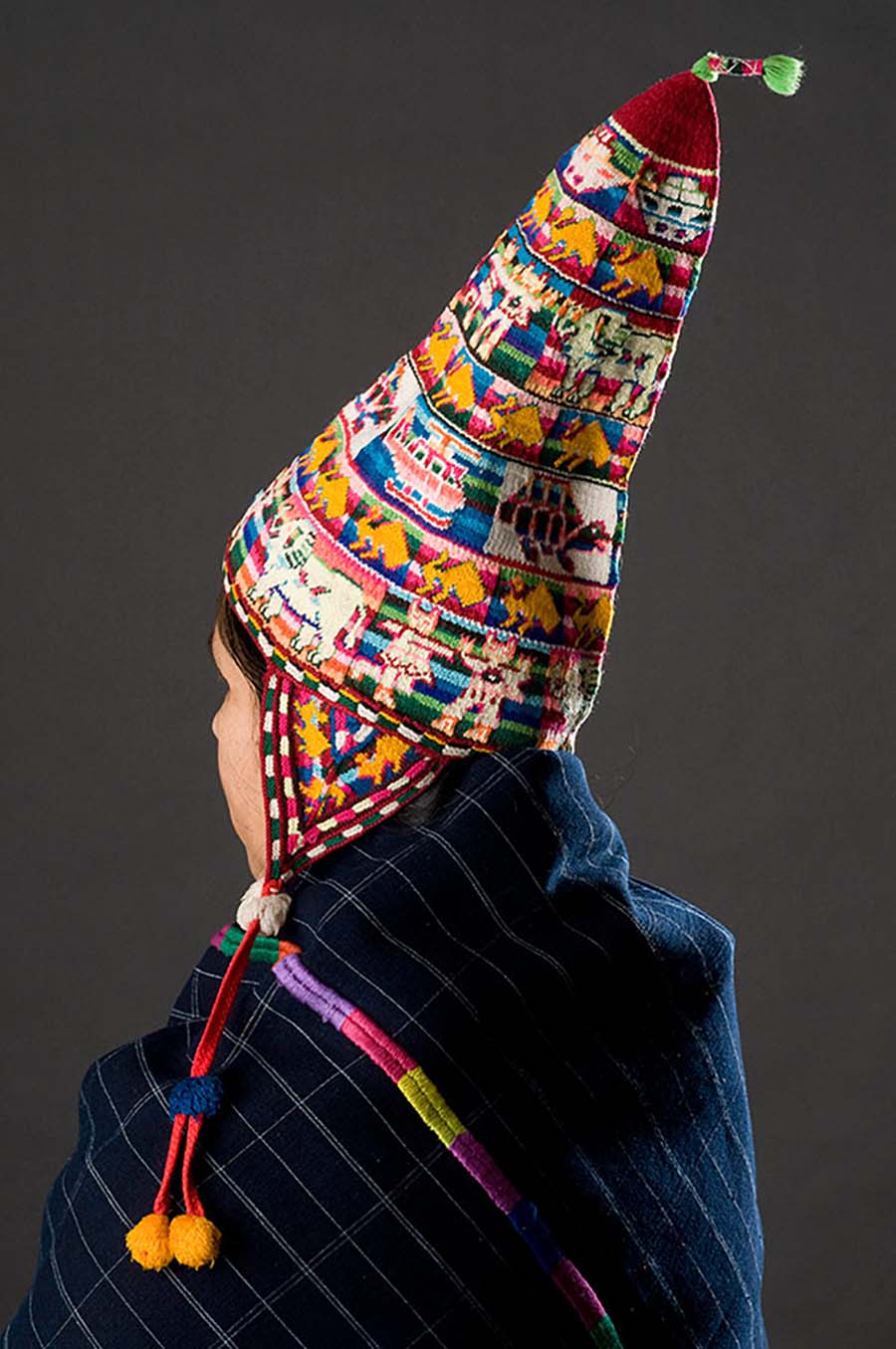
Chullo y Corte/Cap and Skirt. Artisans unknown, mid-to-late 20th century. Cusco, Peru. Here the skirt is worn as a shawl by model Cruz Martha Rascon.
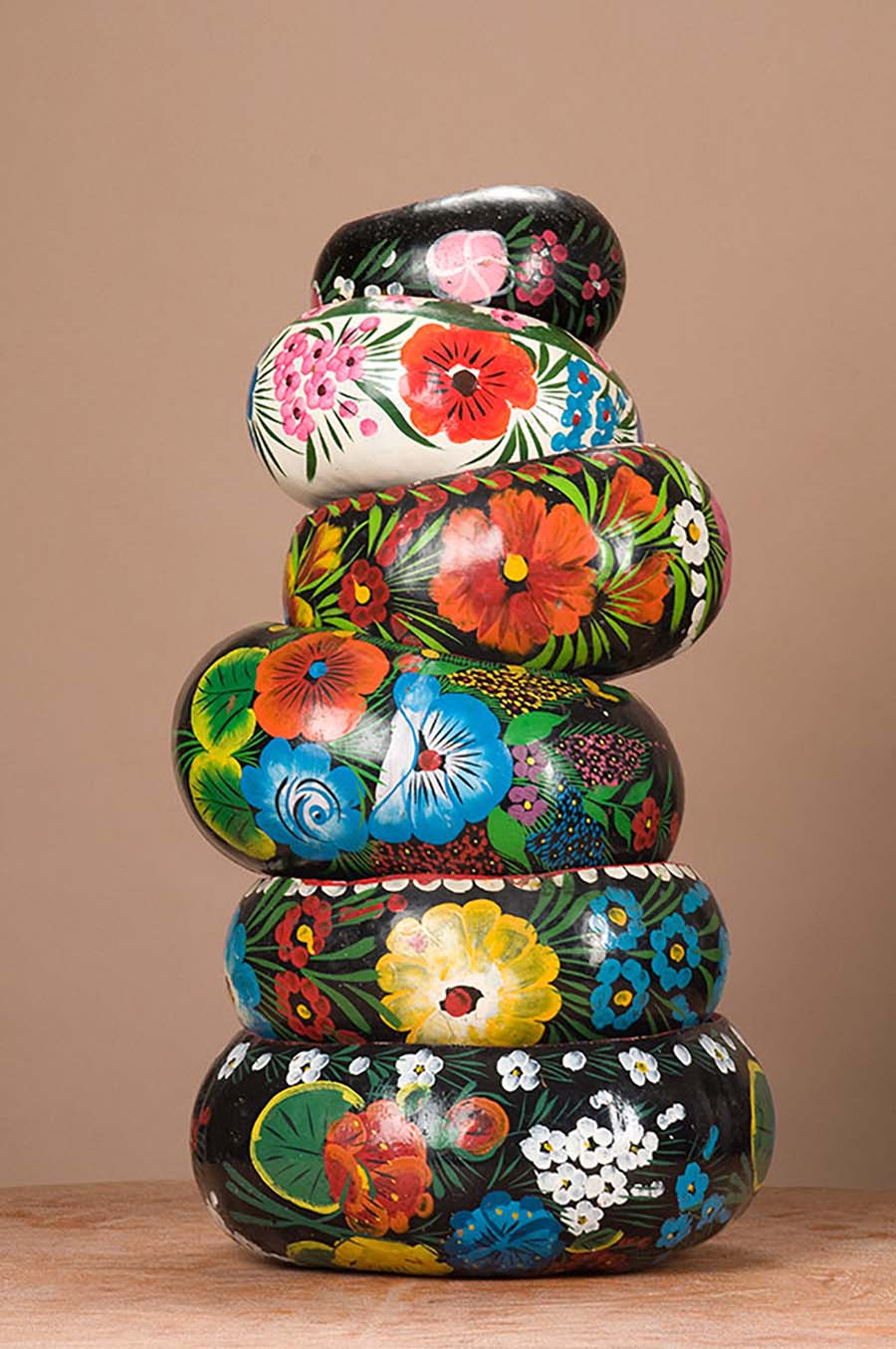
Calabazas Pintadas/Painted Gourds. Artisans unknown, early 20th century. Gourds. Tuxtla Gutierrez, Chiapas, Mexico.
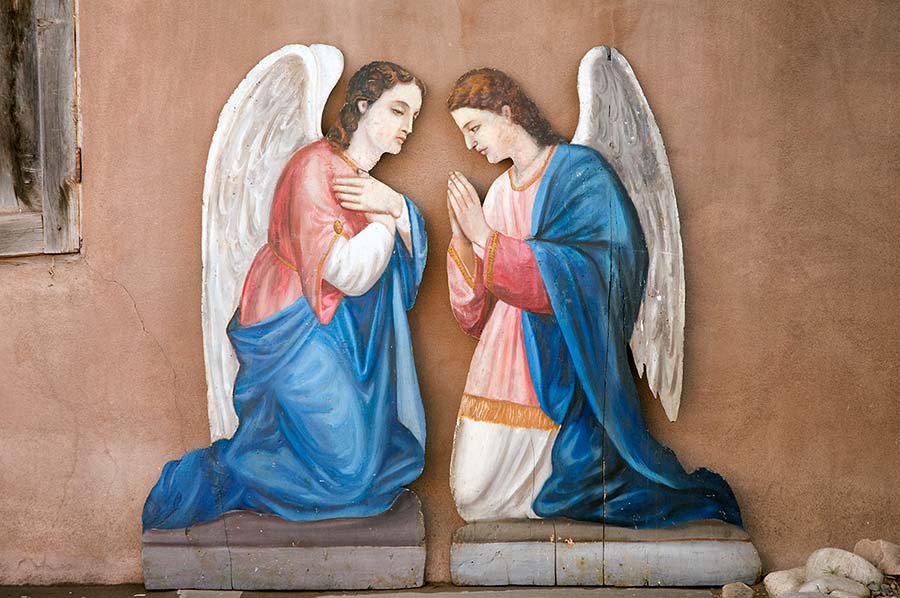
Angeles/Angels. Artisans unknown, late 19th – early 20th century. Wood. Chordeleg, Azuay Province, Ecuador. Angels such as these were almost always created in pairs.

Caja de Coser/ Sewing Box. Juan Cuyo Cuyo, 2008. Wood. Tigua, Ecuador. The Tiguan artisans of Ecuador frequently copy the styles of European artists, as in this case – Botero.
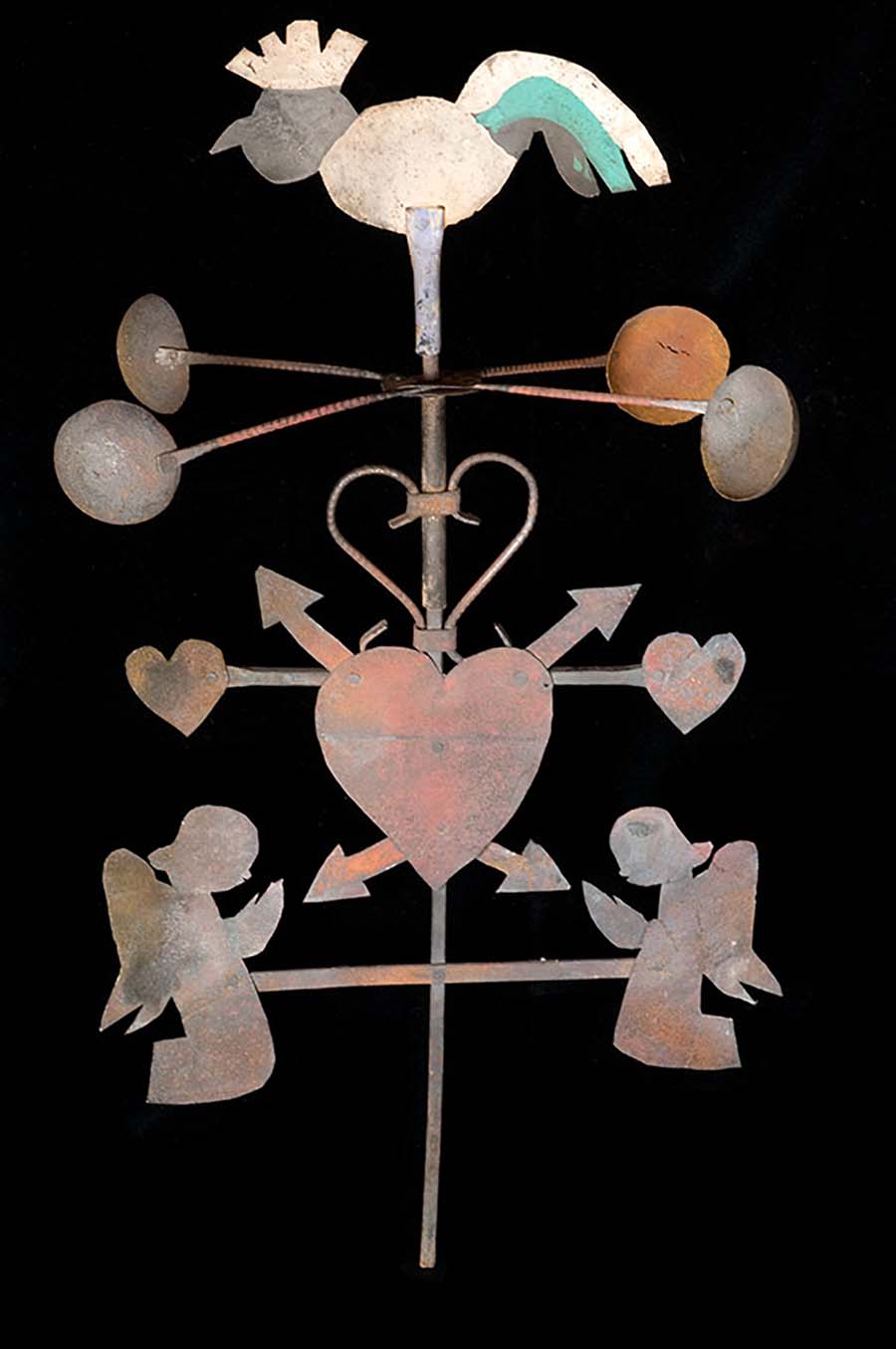
Benedicion de la Casa/House Blessing. Artisan unknown, 20th century. Iron. Ecuador.
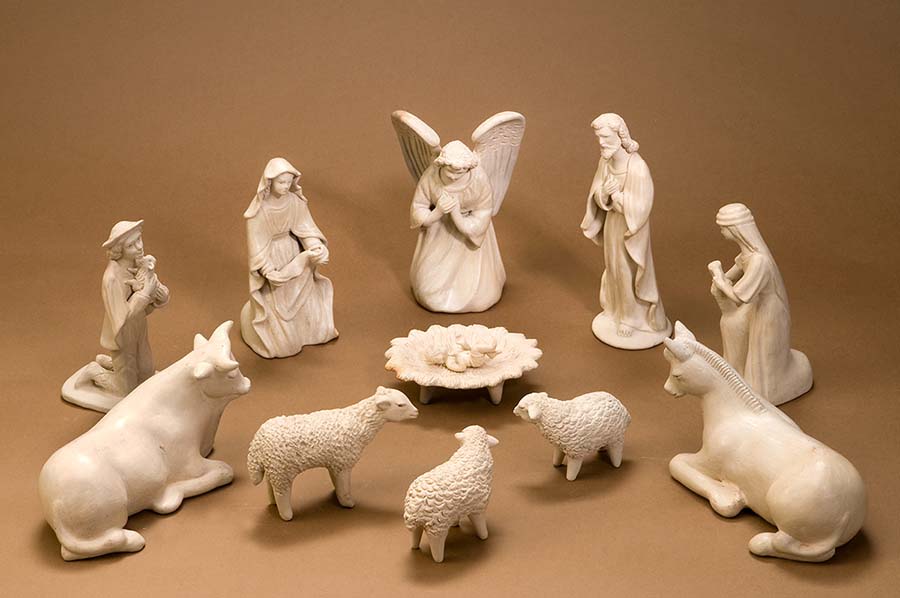
Nacimiento/Nativity. Artisan unknown, late 20th century. Ceramic. Guatemala.
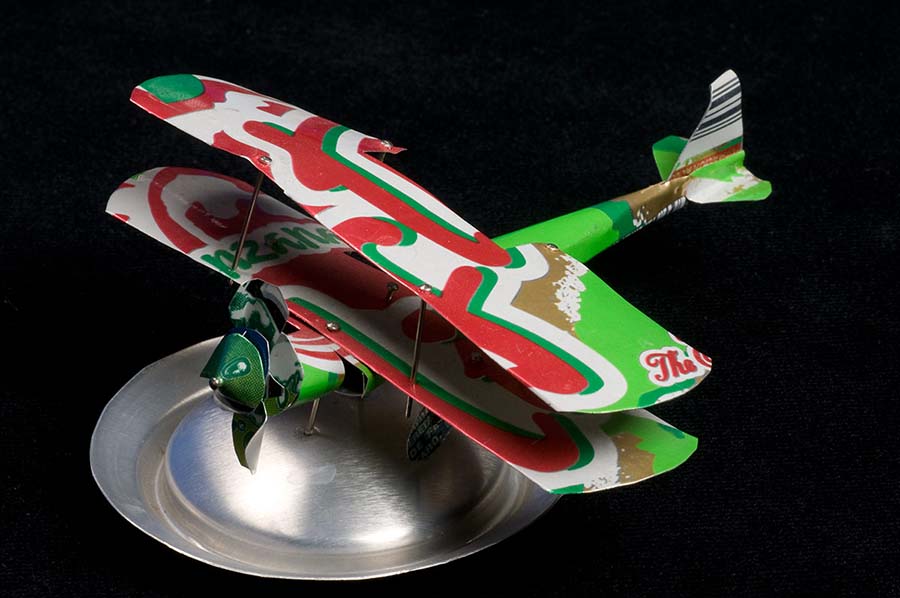
Avion/Airplane. Artisan unknown, 2007. Aluminum can. Mexico.

Paño/ Shawl. Artisans unknown, mid-to-late 20th century. Cotton. Ecuador. Traditionally, men wove the ikat and women created the white trim.

Boda/Wedding. Elpedia Chacon and family, 2008. Ceramic and Wire. Oaxaca, Mexico. This toy was made for Las Dias de Los Muertos (the Days of the Dead).
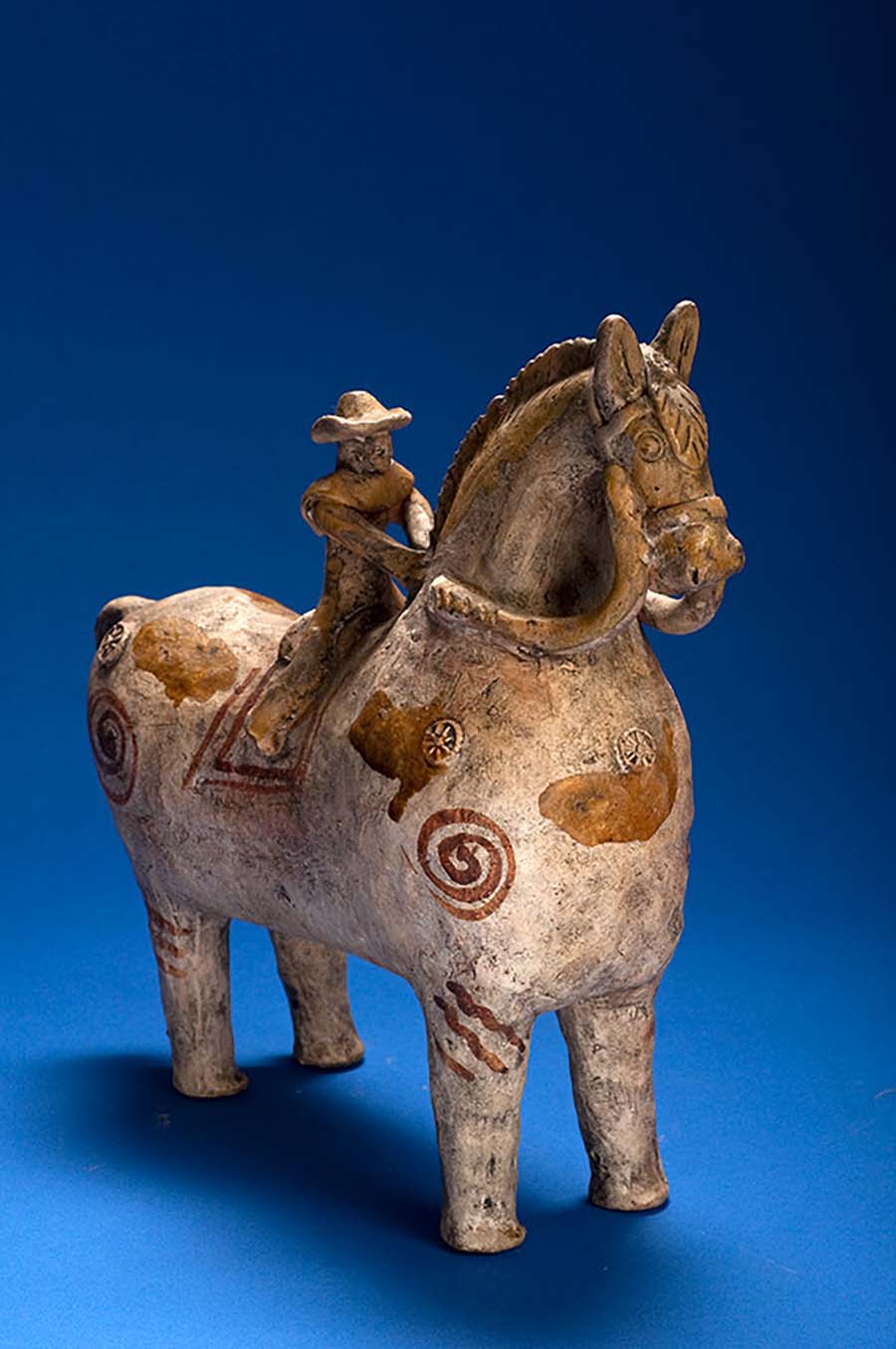
Benedicion de la Casa/House Blessing. Artisan unknown, early 20th century. Ceramic. Puno, Peru.
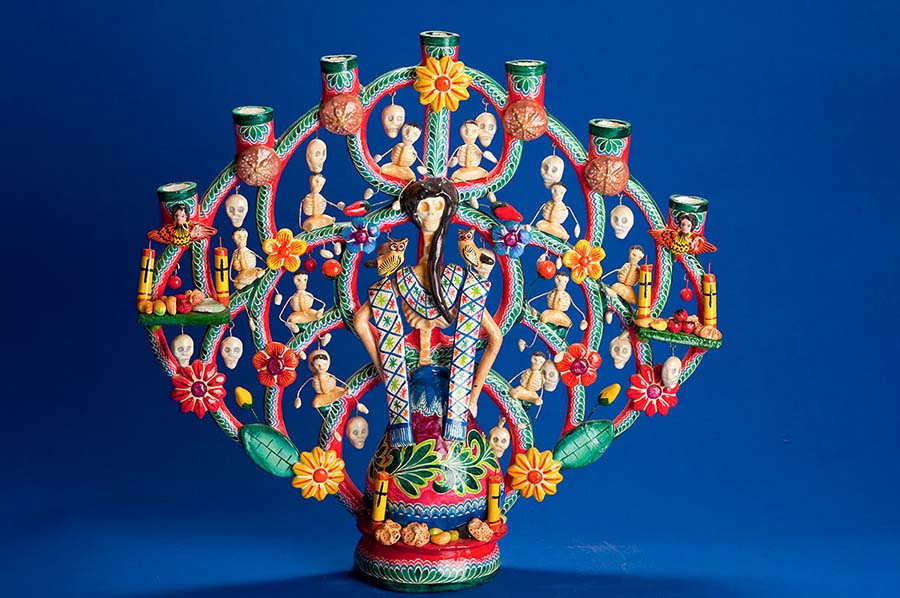
Arbol de la Vida Candelabros. Isabel Castillo Orta, 1980s. Ceramic. Izucar de Matamoros, Puebla, Mexico.
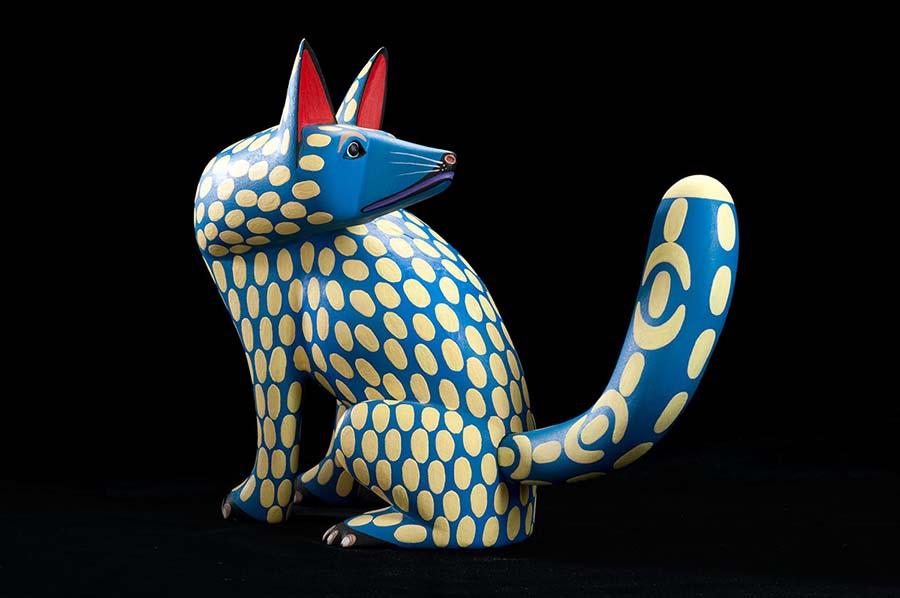
Zorro/Fox. David Pablo, early 2000s. Wood. Oaxaca, Mexico.
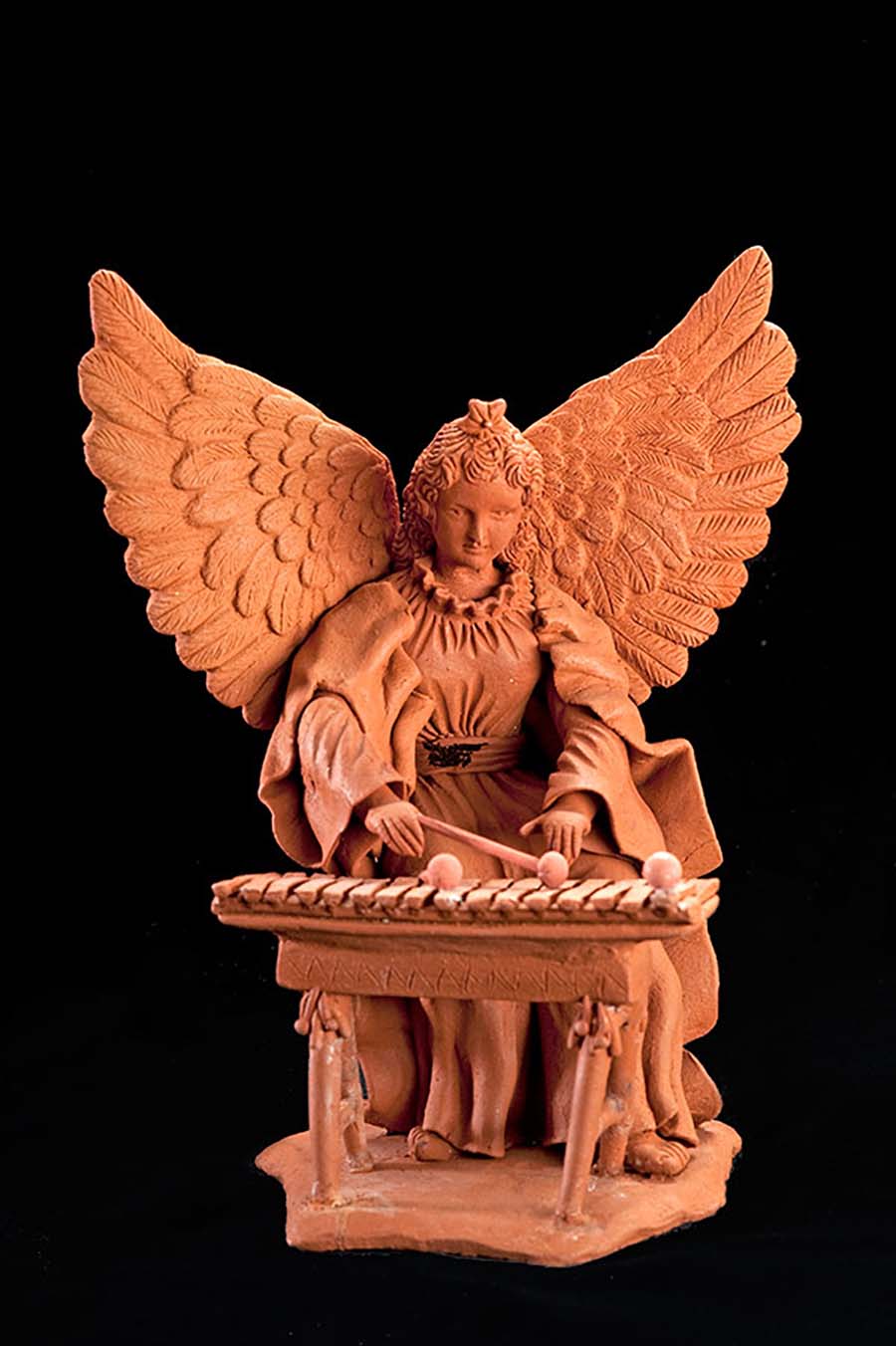
Angel Tocando la Marimba. Florencio Rodenas, 2009. Ceramic. Antigua, Guatemala.

Virgin of Guadalupe Appears Before Juan Diego. Concepcion Aguilar, 1990s. Ceramic. Ocotlan de Morelos, Oaxaca, Mexico.

Uma/Corpus Christi Dance Hat, late 20th century with older elements attached. Umas (each unique) are adorned with mementos significant to the wearer and his family.
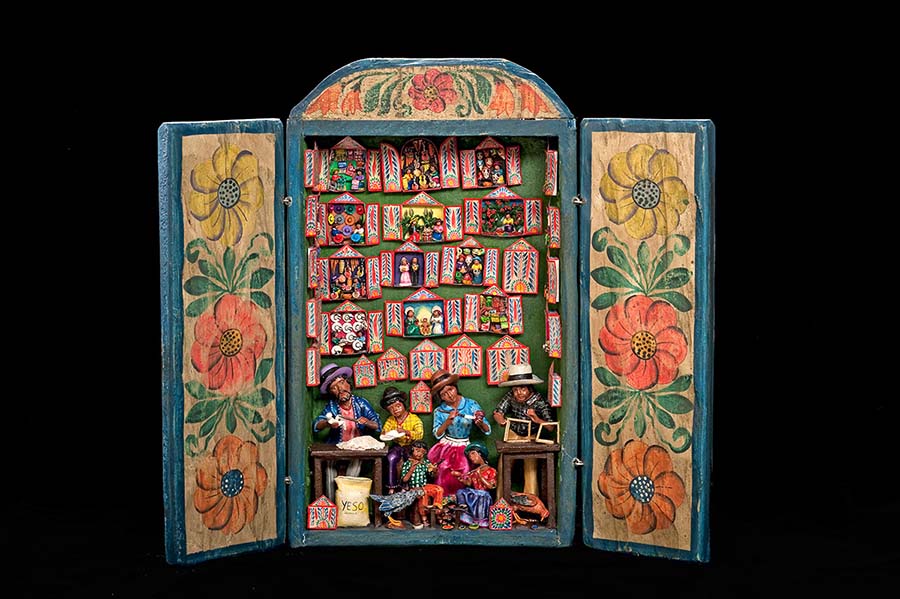
Taller de Retablos. Claudio Jimenez Quispe. Wood, wire, and vegetal paste. Lima, Peru.
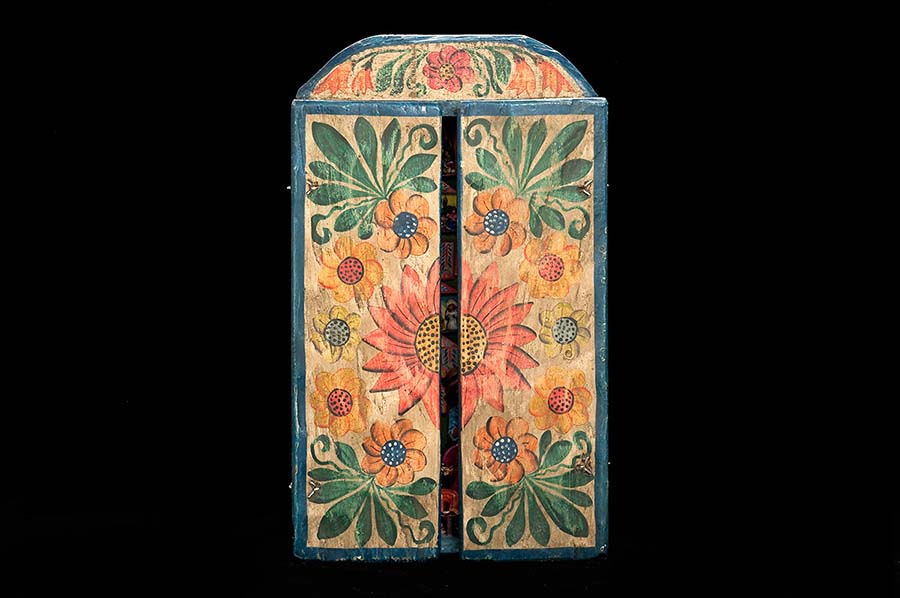
Taller de Retablos. Claudio Jimenez Quispe. Wood, wire, and vegetal paste. Lima, Peru.
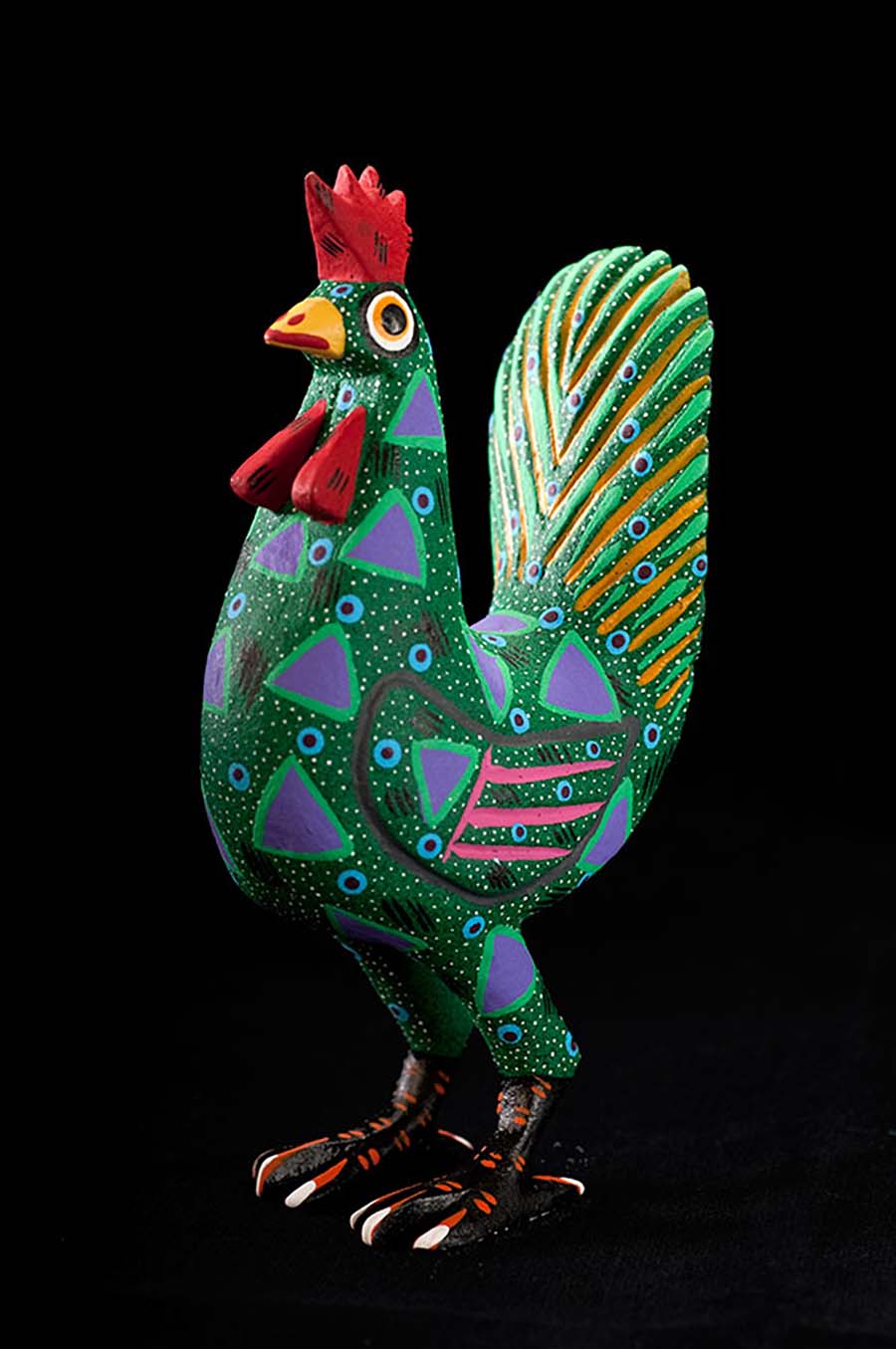
Gallo/Rooster. Artisan unknown, 2007. Wood. Oaxaca, Mexico.

Illas/Amulets. Artists unknown, early 20th century. Huamanga stone. Peru. Traditionally these amulets were buried to protect against misfortune. The red stain on the figure to the left indicates its use during Carnaval.

Illa/Amulet. Artist unknown, early 20th century. Huamanga stone. Peru. Traditionally these amulets were buried to protect against misfortune.

Yalalag Cross and Chain. Felix Bautista, 2005-2006. Sterling silver. Oaxaca, Mexico. The basic design of the Yalalag cross predates the conquest of Mexico. Post conquest, the artisans incorporated Christian themes, as shown here with the angel motif.

Yalalag Crosses. Felix Bautista, 1990s. Sterling silver. Oaxaca, Mexico.

Moses Saved from the Waters. Vidal Gutierrez, 1990s. Ceramic. Lurin, Peru.

Chordeleg Pot. Artist unknown, early 20th century. Ceramic. Chordeleg, Azuay Province, Ecuador.

Utilitarian Pot. Artist unknown, early 20th century. Ceramic. La Victoria, Cotopaxi Province, Ecuador.

Hand of Fatima with Angels. Arturo Sosa Perez, 2007. Tin and glass. Oaxaca, Mexico.

Arbol de la Vida Candelabros. Isabel Castillo Orta, 1980s. Ceramic. Izucar de Matamoros, Puebla, Mexico.

Muñecas/Dolls. Artisan employed by Enrique and Lourdes Osoro, 2007-2009. Wool. Maqui Maqui, Pataz Province, Peru.

Chullos/Knitted Caps. Artisans unknown, mid-to-late 20th century. Wool. Cusco, Peru. Traditionally men knitted local themes and items of interest into their chullos. These caps were also hung from belts and used as dance ornaments.

Chullo y Corte/Cap and Skirt. Artisans unknown, mid-to-late 20th century. Cusco, Peru. Here the skirt is worn as a shawl by model Cruz Martha Rascon.

Calabazas Pintadas/Painted Gourds. Artisans unknown, early 20th century. Gourds. Tuxtla Gutierrez, Chiapas, Mexico.

Angeles/Angels. Artisans unknown, late 19th – early 20th century. Wood. Chordeleg, Azuay Province, Ecuador. Angels such as these were almost always created in pairs.

Caja de Coser/ Sewing Box. Juan Cuyo Cuyo, 2008. Wood. Tigua, Ecuador. The Tiguan artisans of Ecuador frequently copy the styles of European artists, as in this case – Botero.

Benedicion de la Casa/House Blessing. Artisan unknown, 20th century. Iron. Ecuador.

Nacimiento/Nativity. Artisan unknown, late 20th century. Ceramic. Guatemala.

Avion/Airplane. Artisan unknown, 2007. Aluminum can. Mexico.

Paño/ Shawl. Artisans unknown, mid-to-late 20th century. Cotton. Ecuador. Traditionally, men wove the ikat and women created the white trim.

Boda/Wedding. Elpedia Chacon and family, 2008. Ceramic and Wire. Oaxaca, Mexico. This toy was made for Las Dias de Los Muertos (the Days of the Dead).

Benedicion de la Casa/House Blessing. Artisan unknown, early 20th century. Ceramic. Puno, Peru.

Arbol de la Vida Candelabros. Isabel Castillo Orta, 1980s. Ceramic. Izucar de Matamoros, Puebla, Mexico.

Zorro/Fox. David Pablo, early 2000s. Wood. Oaxaca, Mexico.

Angel Tocando la Marimba. Florencio Rodenas, 2009. Ceramic. Antigua, Guatemala.

Virgin of Guadalupe Appears Before Juan Diego. Concepcion Aguilar, 1990s. Ceramic. Ocotlan de Morelos, Oaxaca, Mexico.

Uma/Corpus Christi Dance Hat, late 20th century with older elements attached. Umas (each unique) are adorned with mementos significant to the wearer and his family.

Taller de Retablos. Claudio Jimenez Quispe. Wood, wire, and vegetal paste. Lima, Peru.

Taller de Retablos. Claudio Jimenez Quispe. Wood, wire, and vegetal paste. Lima, Peru.

Gallo/Rooster. Artisan unknown, 2007. Wood. Oaxaca, Mexico.
